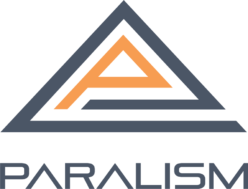
In 2019 Consensus Conference in New York, the topic of how to bridge public and private chains has become one of the hottest indicators in the industry. At the meeting, the Amazon representatives who participated for the first time talked about their blockchain management services deployed in Hyperledger Fabric and the centralized management data book DLB. For that , technical analysis consulting firm Gartner has said that the database will occupy a considerable share in the enterprise blockchain field, because many companies now think that they do not need a decentralized consensus or tokenization, in fact they Only need a system which is immutable.
Is that really the case?
When the performance of the public chain is not enough to support large-scale landing, information chaining, the consortium chain of sharing ledgers between limited enterprises or scopes is faster than building a completely decentralized public chain. The R3 alliance for traditional enterprises, the Hyperledger platform, has become a way to make blockchains adoptable for mass market under realistic conditions. However, the use of distributed ledgers and license chains to transform the banking, supply chain and other industrial systems can only save costs, improve some marginal benefits, and have no innovation in application scenarios, and cannot truly build new businesses.
In addition, the consortium blockchain narrowed distributed ledger writing to a few nodes, and the node identity requires authentication, which undoubtedly degenerates into a distributed database, making it hard for the average user to join; using such a database has no difference in user experience with using centralized database when it comes to getting access. To apply blockchain technology in this way has not made any breakthrough in expanding the scale of business, inspiring new user models, and changing production relations. The giants are devoted to the consortium chain, and it seems to be shocking . Different institutions have different consortium chains, which directly leads to the problem of blockchains that are separated from each other, and it is difficult to construct a value interconnection “empire.”
However, it is undeniable that compared with the decentralized management mode in which the public chain is completely open source and everyone participates, the consortium blockchain is more in line with the actual needs of the enterprise in terms of security, privacy, performance, application, and reliability. However, while solving practical business problems, the alliance chain does block the decentralized dividend of the blockchain. At present, the alliance chain is mainly for the development of traditional enterprises, the B-end users of supply chain finance and traceability enterprises; and the public chain is mainly for the development of the community, targeting C-end consumers, and still can not express the blockchain theory and don’t have the ability to release it. In ecology and community building, token becomes the key to activating the blockchain ecology, and it has extremely high scalability and stickiness, which can encourage more users to participate in ecological construction and bind users and ecological construction more closely; Under the access mechanism of the alliance chain tending to be centralized, the token flow interoperability is extremely poor, and it is difficult to generate potential value chain power. However, subject to the performance of the public chain, the current public chain has not yet shown great ecological benefits: the latest global population data shows that the global population is 7.6 billion, netizens 4 billion, and the number of people participating in the global public chain is about 20 million, but at the same time it show that the public chain is still very broad.
Although the enterprise does need to provide some features of the blockchain within the scope of the license chain, in the long term, it still needs public links to more users, and stimulates ecological creation and new business models. “Can use the two in parallel in the same scene “ has become the crux of many commercials, which far exceeds the requirements for performance and scalability, and actually involves how to make the blockchain play its true commercial value.
So far, the consortium chain technology is still focused on the core and protocol level of technology development, weak serial chain performance, Byzantine fault-tolerant centralization algorithm, chain isolation and other design failures, so that it can only be “replicated” in the scope, The ability of solving problem is relatively one-way, and the diversified business needs of different formats puts very high demands on the versatility of the alliance chain. The existing “templates” have the possibility of being “discarded”. In addition, how to balance the interests and discourse power of the alliance chain from the bottom design, practice power distribution and management is also a big problem. The underlying technology of the public chain, which is in the silent cultivation period, is subject to the serial chain data structure, and does not have the ability to undertake a large number of users; the public chain is also a separate route, whether it is with other public chains or consortium chains. In addition to the problems of the consortium chain and the public chain itself, how the two bridges is just entering the discussion stage, and the corresponding time when the interoperability is completely unknown.
Indeed, if you keep staring at the existing consortium chain and public chain, the above problems seem to have no solution. Only performance and cross-chaining have already made the bottom of the multi-block chain project, don’t mention that between the consortium chain and the public chain. Flexible switching and seamless interaction. However, the reason why the technological breakthrough is so difficult is that we have not found the root of the problem. It is just that we can solve the problem of the surface problem one by one. Paralism brings the blockchain from the serial to the parallel era. Many problems in the one-dimensional world are in the two-dimensional world can all be solved.
The data of Paralism’s underlying parallel chain technology independence and interconnectivity. It can accommodate private chain, consortium chain and public chain at the same time. It is currently known that the only one is infinitely scalable and compatible with multiple types of sub-chains. A global blockchain system that enables cross-chain interconnection between sub-chains.
Parallel blockchain data structure and parallel consensus algorithm Buddy’s architecture, for the public chain and the consortium chain how to get through, founding a perfect solution. First of all, the multi-chain environment provides sufficient resource environment for various development modes such as private chain, consortium chain and public chain. Both B-side and C-side users can customize the sub-chain in the Paralism system, and the number is not limited. A single sub-chain can customize the consensus mechanism to meet the specific needs of the single-chain for performance and licensing environments. The parallel blockchain structure provides a natural cross-chain interaction solution between the chain and the chain, so that the alliance chain and the public chain can be interconnected at any time while maintaining parallel operation.
The current public chain and consortium chain are like two parallel worlds. Many business scenarios have already emerged a strong demand for combining the two, but the technology is not yet in place. At present, solving the problem of scalability, parallel consistency, cross-chain interconnection, and the backbone value Internet Paralism with the web3.0 era has been hindered, expecting demand side and users to come and experience!
Official website: www.paralism.com
Add Paranut Wechat and join our Wechat group

